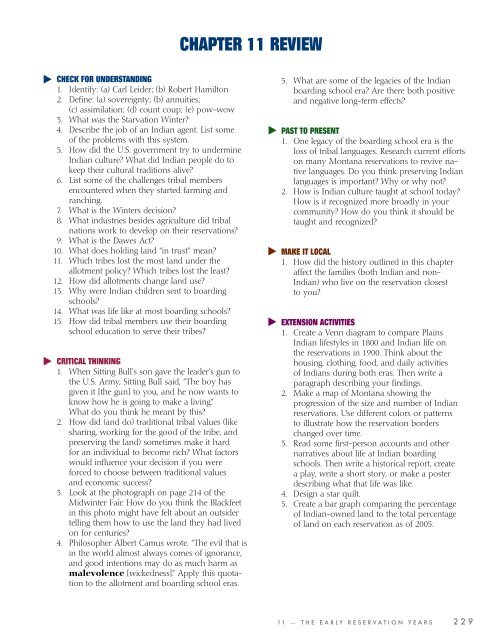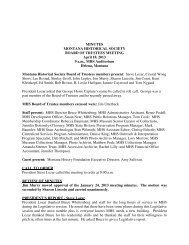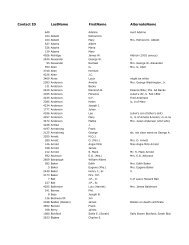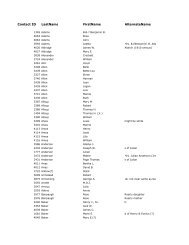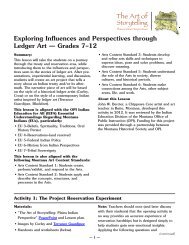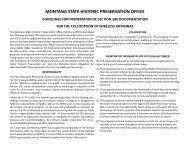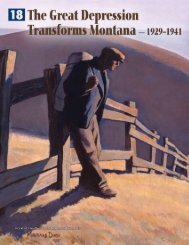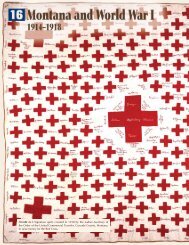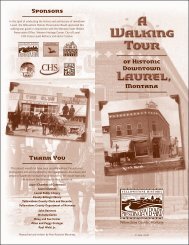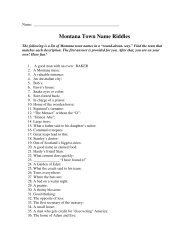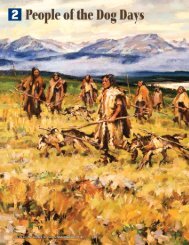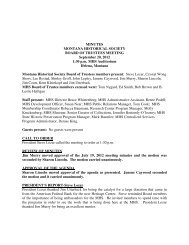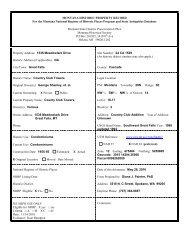Chapter 11 - Montana Historical Society
Chapter 11 - Montana Historical Society
Chapter 11 - Montana Historical Society
You also want an ePaper? Increase the reach of your titles
YUMPU automatically turns print PDFs into web optimized ePapers that Google loves.
CHeCK FoR undeRSTAndinG<br />
1. Identify: (a) Carl Leider; (b) Robert Hamilton<br />
2. Defi ne: (a) sovereignty; (b) annuities;<br />
(c) assimilation; (d) count coup; (e) pow-wow<br />
3. What was the Starvation Winter?<br />
4. Describe the job of an Indian agent. List some<br />
of the problems with this system.<br />
5. How did the U.S. government try to undermine<br />
Indian culture? What did Indian people do to<br />
keep their cultural traditions alive?<br />
6. List some of the challenges tribal members<br />
encountered when they started farming and<br />
ranching.<br />
7. What is the Winters decision?<br />
8. What industries besides agriculture did tribal<br />
nations work to develop on their reservations?<br />
9. What is the Dawes Act?<br />
10.<br />
<strong>11</strong>.<br />
12.<br />
13.<br />
14.<br />
15.<br />
What does holding land “in trust” mean?<br />
Which tribes lost the most land under the<br />
allotment policy? Which tribes lost the least?<br />
How did allotments change land use?<br />
Why were Indian children sent to boarding<br />
schools?<br />
What was life like at most boarding schools?<br />
How did tribal members use their boarding<br />
school education to serve their tribes?<br />
CRiTiCAL THinKinG<br />
1. When Sitting Bull’s son gave the leader’s gun to<br />
the U.S. Army, Sitting Bull said, “The boy has<br />
given it [the gun] to you, and he now wants to<br />
know how he is going to make a living.”<br />
What do you think he meant by this?<br />
2. How did (and do) traditional tribal values (like<br />
sharing, working for the good of the tribe, and<br />
preserving the land) sometimes make it hard<br />
for an individual to become rich? What factors<br />
would infl uence your decision if you were<br />
forced to choose between traditional values<br />
and economic success?<br />
3. Look at the photograph on page 214 of the<br />
Midwinter Fair. How do you think the Blackfeet<br />
in this photo might have felt about an outsider<br />
telling them how to use the land they had lived<br />
on for centuries?<br />
4. Philosopher Albert Camus wrote, “The evil that is<br />
in the world almost always comes of ignorance,<br />
and good intentions may do as much harm as<br />
malevolence [wickedness].” Apply this quotation<br />
to the allotment and boarding school eras.<br />
CHAPTeR <strong>11</strong> ReVieW<br />
5. What are some of the legacies of the Indian<br />
boarding school era? Are there both positive<br />
and negative long-term effects?<br />
PAST To PReSenT<br />
1. One legacy of the boarding school era is the<br />
loss of tribal languages. Research current efforts<br />
on many <strong>Montana</strong> reservations to revive native<br />
languages. Do you think preserving Indian<br />
languages is important? Why or why not?<br />
2. How is Indian culture taught at school today?<br />
How is it recognized more broadly in your<br />
community? How do you think it should be<br />
taught and recognized?<br />
MAKe iT LoCAL<br />
1. How did the history outlined in this chapter<br />
affect the families (both Indian and non-<br />
Indian) who live on the reservation closest<br />
to you?<br />
eXTenSion ACTiViTieS<br />
1. Create a Venn diagram to compare Plains<br />
Indian lifestyles in 1800 and Indian life on<br />
the reservations in 1900. Think about the<br />
housing, clothing, food, and daily activities<br />
of Indians during both eras. Then write a<br />
paragraph describing your fi ndings.<br />
2. Make a map of <strong>Montana</strong> showing the<br />
progression of the size and number of Indian<br />
reservations. Use different colors or patterns<br />
to illustrate how the reservation borders<br />
changed over time.<br />
3. Read some fi rst-person accounts and other<br />
narratives about life at Indian boarding<br />
schools. Then write a historical report, create<br />
a play, write a short story, or make a poster<br />
describing what that life was like.<br />
4. Design a star quilt.<br />
5. Create a bar graph comparing the percentage<br />
of Indian-owned land to the total percentage<br />
of land on each reservation as of 2005.<br />
1 1 — T H E E A R L Y R E S E R V A T I O N Y E A R S 2 2 9


